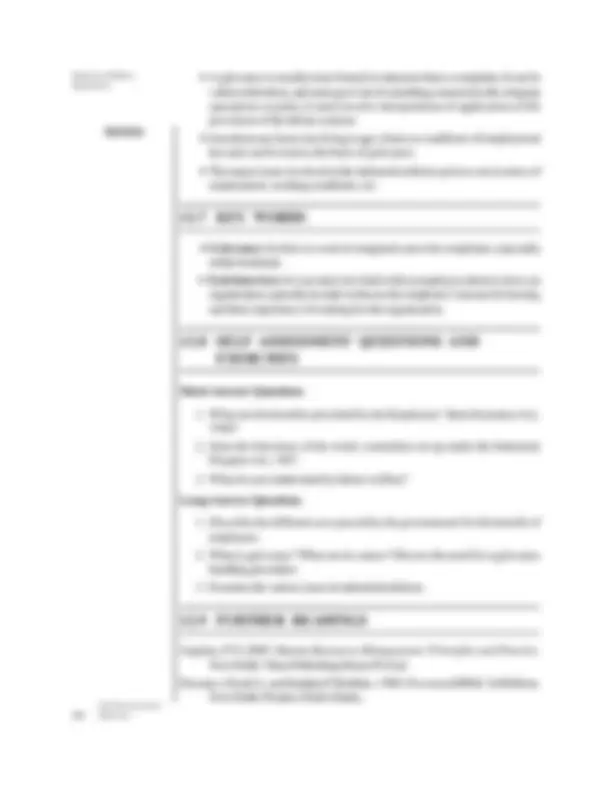



Study with the several resources on Docsity

Earn points by helping other students or get them with a premium plan


Prepare for your exams
Study with the several resources on Docsity

Earn points to download
Earn points by helping other students or get them with a premium plan
Community
Ask the community for help and clear up your study doubts
Discover the best universities in your country according to Docsity users
Free resources
Download our free guides on studying techniques, anxiety management strategies, and thesis advice from Docsity tutors
Human Resource Management (HRM) is a strategic and comprehensive approach to managing people within an organisation. It involves recruiting, hiring, training, evaluating, and rewarding employees to maximise their performance and align with the organisation’s goals. HRM also ensures compliance with labour laws, fosters a positive workplace culture, and supports employee development and well-being. By managing workforce planning, performance, compensation, and employee relations, HRM plays a vital role in organisational success. In today’s dynamic business environment, HRM is increasingly data-driven and aligned with long-term strategic planning, making it an essential function in both large corporations and small enterprises.
Typology: Lecture notes
1 / 2

This page cannot be seen from the preview
Don't miss anything!


Self-Instructional Material 151
Employee Welfare,
There have been various laws and acts that have been passed since independence for the benefit of employees as well as for their safety. The Employees’ State Insurance Act was passed in 1948 to make available various social welfare facilities available to the employees of a company through one agency. The Employees’ Provident Fund Act was launched in 1952 that provides retirement benefits to the employees of a company. The Workmen’s Compensation Act was established by the government in the year 1923. The main objective of this Act is to apply a commitment on the employers to offer compensation to the employees against the accidents that occur during the course of employment. The Industrial Disputes Act was passed in the year 1947. This Act is related to the termination and retrenchment of the employees by a company.
Employee Welfare, Separation
Self-Instructional 152 Material
A grievance is usually more formal in character than a complaint. It can be valid or ridiculous, and must grow out of something connected with company operations or policy it must involve interpretation of application of the provisions of the labour contract. Just about any factor involving wages, hours or conditions of employment has and can be used as the basis of grievance. The major issues involved in the industrial relations process are in terms of employment, working conditions, etc.
Grievance: It refers to a real or imagined cause for complaint, especially unfair treatment. Exit Interview: It is an interview held with an employee about to leave an organization, typically in order to discuss the employee’s reasons for leaving and their experience of working for the organization.
Short-Answer Questions
Aquinas, P. G. 2005. Human Resources Management: Principles and Practice. New Delhi: Vikas Publishing House Pvt Ltd. Decenco, David A. and Stephen P. Robbins. 1989. Personnel/HRM, 3rd Edition. New Delhi: Prentice-Hall of India.